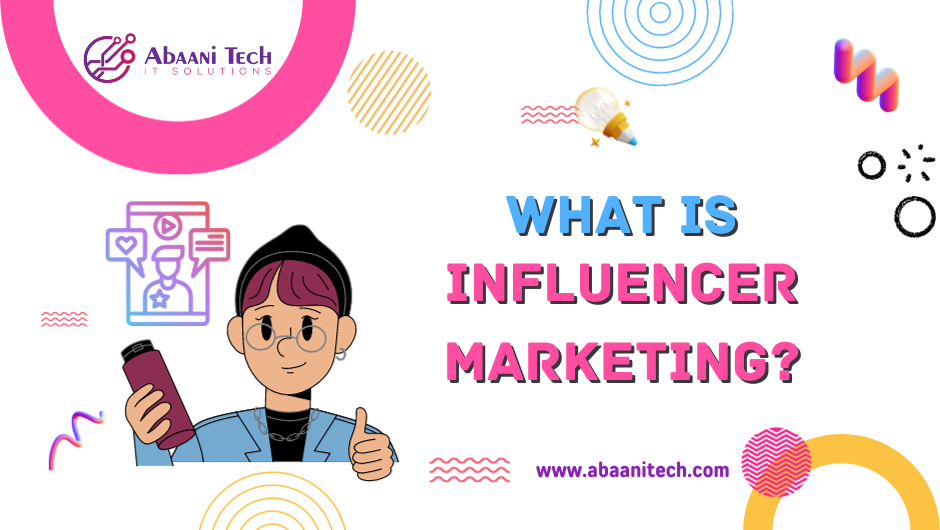What is Influencer Marketing?




In today’s digital landscape, influencer marketing has emerged as a powerful strategy for brands to connect with their target audience. This form of marketing leverages the influence of individuals who have a substantial following on social media platforms.
Let’s delve into the intricacies of influencer marketing and understand why it has become a cornerstone of modern advertising.
- Definition of Influencer Marketing
- The Role of Influencers
- Types of Influencers
- Creating a Successful Influencer Marketing Strategy
- Measuring Influencer Marketing Success
- Challenges in Influencer Marketing
- The Future of Influencer Marketing
- Influencer Marketing Tools and Platforms
- Legal and Ethical Considerations
- How to Become an Influencer
- Conclusion
- Frequently Asked Questions (FAQs)
Definition of Influencer Marketing
Influencer marketing involves collaborating with individuals, known as influencers, to promote products or services to their followers. These influencers, often experts in their niche, possess the ability to sway the purchasing decisions of their audience.
With the rise of social media, influencer marketing has become indispensable. Consumers are more likely to trust recommendations from their favorite influencers than traditional advertising methods.
The Role of Influencers




The role of influencers extends beyond mere promotion; they serve as trusted narrators, weaving a compelling story that resonates with audiences, and fostering genuine connections that transcend traditional advertising.
These are some roles of influencers you must know.
1. Building Trust and Credibility
Influencers build a unique connection with their followers, fostering trust and credibility. When influencers endorse a product, it resonates with authenticity, a quality often lacking in conventional advertisements.
2. Reaching Target Audiences
Influencers cater to specific demographics, allowing brands to precisely target their desired audience. This targeted approach enhances the effectiveness of marketing campaigns.
3. Impact on Consumer Behavior
Studies indicate that influencer recommendations can significantly impact consumer behavior, influencing purchasing decisions and brand loyalty.
Types of Influencers
The diverse landscape of influencers caters to varied audience preferences – from the broad appeal of Mega-Influencers to the niche expertise of Nano-Influencers, offering brands a nuanced spectrum to align with their target demographics strategically.
Here are some of the types of influencer marketing.
1. Mega-Influencers
These are individuals with a massive following, often in the millions. They have a broad reach but may lack the personal connection found in smaller influencers.
2. Macro-Influencers
With a sizable yet more manageable following, macro-influencers strike a balance between reach and engagement.
3. Micro-Influencers
Micro-influencers have a niche audience, providing a more intimate connection with their followers. Their recommendations carry significant weight within their community.
4. Nano-Influencers
Nano-influencers have a smaller following but offer unparalleled authenticity. Their recommendations are perceived as genuine, fostering deep connections with their audience.
Creating a Successful Influencer Marketing Strategy
Crafting a successful influencer marketing strategy involves more than transactions; it’s a careful orchestration of authentic collaborations, clear campaign goals, and content that resonates, ensuring a harmonious blend of brand messaging and influencer authenticity.
Here is the process to create a successful influencer marketing strategy.
1. Identifying the Target Audience
Understanding the demographics and preferences of the target audience is crucial. This knowledge guides the selection of influencers who align with the brand and resonate with the intended consumers.
2. Choosing the Right Influencers
Careful consideration should be given to an influencer’s authenticity, relevance to the brand, and engagement levels. The goal is to form partnerships that feel genuine and create a positive impact.
3. Setting Clear Campaign Goals
Define specific, measurable, and achievable goals for the influencer marketing campaign. Whether it’s increasing brand awareness, driving sales, or boosting engagement, clarity in objectives is essential.
4. Crafting Authentic Content
Encourage influencers to create content that aligns with their style while integrating the brand message. Authenticity is key to building a connection with the audience and ensuring the success of the campaign.
Measuring Influencer Marketing Success




Measuring Influencer Marketing Success goes beyond mere numbers; it’s about deciphering the story told by engagement metrics, conversion rates, and brand sentiment, providing brands with invaluable insights into the impact and resonance of their influencer campaigns.
Here we discuss success measure factors in detail.
1. Key Performance Indicators (KPIs)
Identify and track key performance indicators such as reach, engagement, conversion rates, and brand sentiment. These metrics provide insights into the effectiveness of the influencer campaign.
2. Tracking Engagement and Conversions
Analyzing likes, comments, shares, and conversion rates provides a comprehensive view of audience engagement and the campaign’s impact on driving actions.
3. Analyzing Return on Investment (ROI)
Evaluate the ROI by comparing the campaign’s cost to the generated revenue or other defined objectives. This analysis helps refine future influencer marketing strategies.
Challenges in Influencer Marketing
In the ever-evolving landscape of Influencer Marketing, overcoming challenges is an art. Navigating authenticity concerns, finding genuine influencers, and managing relationships are integral steps toward sculpting impactful and enduring brand-influencer connections.
Here are three main challenges for the influencer marketer.
- As influencer marketing grows, maintaining authenticity becomes a challenge. Brands must prioritize genuine connections to avoid a sense of commercialization.
- Identifying influencers genuinely aligned with a brand’s values and goals requires thorough research and evaluation, ensuring partnerships are mutually beneficial.
- Effective communication and collaboration are vital in maintaining healthy relationships with influencers. Clear expectations and transparent discussions contribute to long-term partnerships.
The Future of Influencer Marketing
The future of influencer marketing unfolds with promising trends, dynamic integration with e-commerce, and the evolution of social media platforms, signaling a continued metamorphosis in the way brands and influencers engage with audiences in the digital realm.
- Emerging Trends: Stay abreast of evolving trends such as virtual influencers, augmented reality collaborations, and interactive content. The landscape is dynamic, and adapting to new trends ensures continued success.
- Integration with E-commerce: Expect increased integration between influencer marketing and e-commerce, allowing seamless shopping experiences directly from social media platforms.
- Evolving Social Media Platforms: As new platforms emerge and existing ones evolve, influencer marketing strategies must adapt to the changing dynamics of social media.
Influencer Marketing Tools and Platforms
Empowering brands in the digital realm, ‘Influencer Marketing Tools and Platforms’ act as the catalysts for seamless collaboration, offering analytics prowess, social media management efficiency, and a centralized hub for influencers and brands to converge, amplifying the impact of influencer marketing campaigns.
Here are some of the tools and platforms you must know if you are an influence marketer.
- Social Media Management Tools: Utilize tools like Hootsuite, Buffer, or Sprout Social for efficient influencer collaboration, content scheduling, and performance tracking.
- Analytics Platforms: Platforms such as Google Analytics and social media analytics tools offer valuable insights into the impact of influencer campaigns.
- Collaboration Platforms: Dedicated influencer marketing platforms like AspireIQ or Traackr streamline the process of discovering, connecting, and managing influencers.
Legal and Ethical Considerations
In the realm of Influencer Marketing, Legal and Ethical Considerations serve as the compass, guiding brands and influencers through the intricate terrain of transparent disclosures, clear contractual agreements, and vigilant measures to ensure authenticity, trust, and compliance with ethical standards.
Here are some legal and ethical considerations for influencer marketers.
- Disclosure Requirements: Adhere to legal requirements for influencer partnerships, ensuring transparent disclosures of paid collaborations to maintain trust with the audience.
- Contractual Agreements: Establish clear contractual terms covering deliverables, compensation, usage rights, and exclusivity to avoid misunderstandings.
- Avoiding Controversies: Prevent potential controversies by conducting due diligence on influencers and staying vigilant to shifts in public sentiment.
How to Become an Influencer
Embarking on the journey of influencer marketing is a venture into personal branding, niche cultivation, and consistent content creation. It’s a roadmap for individuals aspiring to carve their unique space in the digital landscape, sharing their passions and insights with a captivated audience.
Here are tips on how you become an influencer nowadays.
- Building Personal Brand: Focus on building a unique and authentic personal brand through consistent content, engagement, and niche expertise.
- Niche Selection: Identify a specific niche or interest to stand out and attract a dedicated audience interested in your content.
- Consistent Content Creation: Regularly create and share high-quality content to maintain audience interest and engagement.
Conclusion
Influencer marketing continues to shape the digital marketing landscape, providing unique opportunities for brands to connect with audiences in a more authentic and targeted manner. As the industry evolves, staying informed about emerging trends, navigating challenges, and fostering genuine relationships with influencers will be key to sustained success.
Frequently Asked Questions (FAQs)
- What is the cost of hiring an influencer?
Influencer costs vary based on factors like follower count, niche, and engagement levels. Micro-influencers may charge less, offering a cost-effective option.
- How can businesses measure the ROI of influencer marketing?
ROI is measured by comparing the campaign’s cost to generated revenue, increased brand awareness, or other predefined goals.
- Are there risks associated with influencer partnerships?
Yes, risks include authenticity concerns, potential controversies, and the need for vigilant management of influencer relationships.
- What is the impact of influencer marketing on traditional advertising?
Influencer marketing often complements traditional advertising, offering a more authentic and targeted approach.
- Can micro-influencers be as effective as mega-influencers?
Yes, micro-influencers can be highly effective, especially in niche markets, due to their authentic connections with smaller, engaged audiences.





